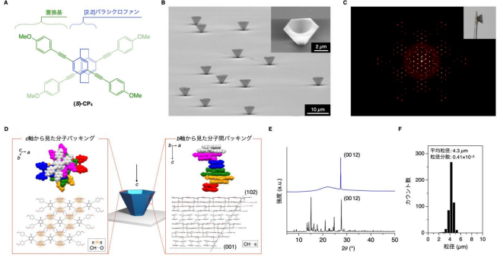素材に粉体をサンドすることで、超撥水性に適した性質が得られる Sanding powder into a material provides the right properties for superhydrophobicity
2022-08-04 ライス大学
その方法とは、サンドペーパー、数種類の粉、そしてひじ掛けである。
研究チームは、表面を研磨すると水に濡れずに水を流す能力が高まることを明らかにしました。
この超疎水性表面は、優れた着氷防止特性も備えている。処理した表面では、未処理の素材に比べて、水が凍るまでに2.6倍もの時間がかかることがわかりました。また、氷の付着力は、マイナス31度まで下がっても40%減少しました。
<関連情報>
- https://news.rice.edu/news/2022/water-cant-touch-sanded-powdered-surface
- https://pubs.acs.org/doi/pdf/10.1021/acsami.2c05076
サンドイン法によるロバストな超撥水性表面の実現 Robust Superhydrophobic Surfaces via the Sand-In Method
Weiyin Chen, Winston Wang, Duy Xuan Luong, John Tianci Li, Victoria Granja, Paul A. Advincula, Chang Ge, Yieu Chyan, Kaichun Yang, Wala A. Algozeeb, C. Fred Higgs III*, and James M. Tour
ACS Applied Materials and Interfaces Published:July 21, 2022
DOI:https://doi.org/10.1021/acsami.2c05076

Abstract
Superhydrophobic surfaces have gained sustained attention because of their extensive applications in the fields of self-cleaning, anti-icing, and drag reduction systems. Water droplets must have large apparent contact angle (CA) (>150°) and small CA hysteresis (<10°) on these surfaces. However, previous research usually involves complex fabrication strategies to modify the surface wettability. It is also challenging to maintain the temporal and mechanical stability of the delicate surface textures. Here, we develop a one-step solvent-free sand-in method to fabricate robust superhydrophobic surfaces directly atop various substrates with an apparent CA up to ∼163.8° and hysteresis less than 5°. The water repellency can withstand 100 Scotch tape peeling tests and remain stable after being stored under ambient humid conditions in Houston, Texas, for 18 months or being heated at 130 °C in air for 24 h. The superhydrophobic surfaces have excellent anti-icing ability, including a ∼2.6× longer water freezing time and ∼40% smaller ice adhesion strength with the temperature as low as −35 °C. Since the surface layers are fabricated by sanding the substrates with the powder additives, the surface damage can be repaired by a direct re-sanding treatment with the same powder additives. Further sand-in condition screenings broaden surface wettability from hydrophilic to superhydrophobic. The sand-in method induces the surface modification and the formation of the tribofilm. Surface and materials characterizations reveal that both microstructures and nanoscale asperities of the tribofilms contribute to the robust superhydrophobic features of sanded surfaces.



